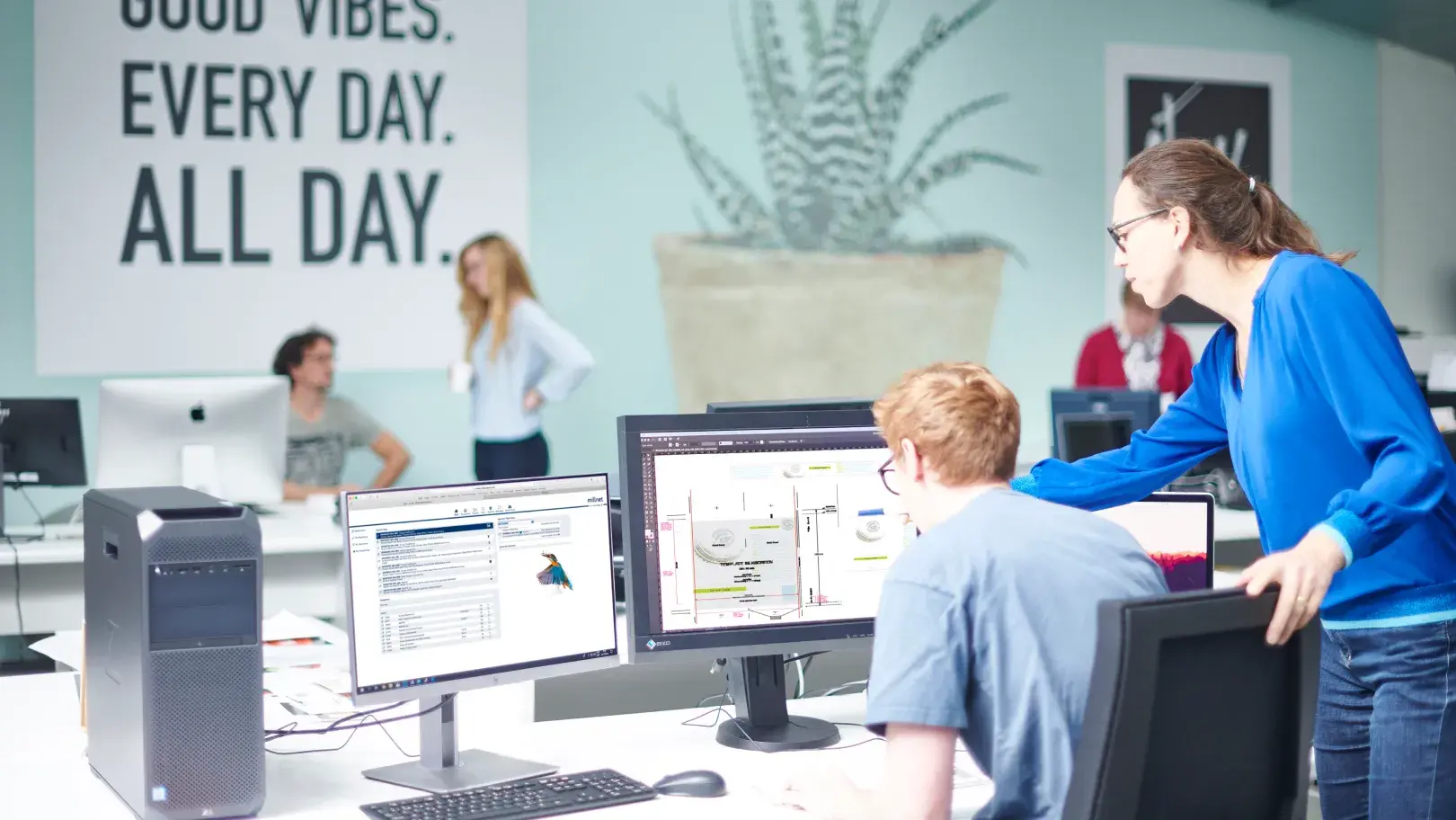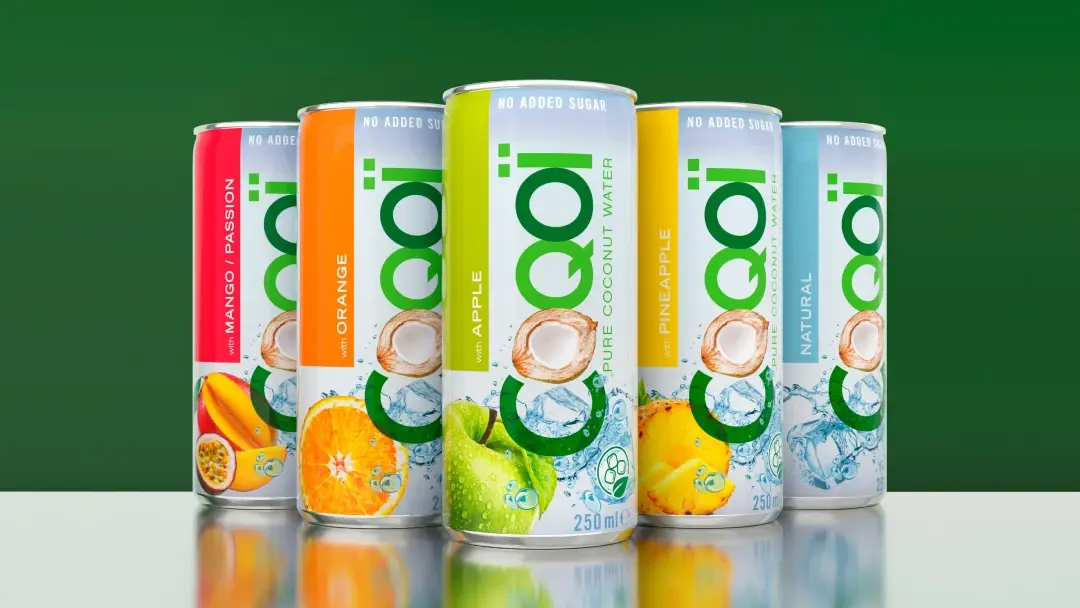Our step-by-step guide to the prepress process explains what prepress is, and takes you through its different stages from file collection to the production of printing plates. You’ll find out how a robust prepress process can secure high-quality packaging printing and brand consistency.
What is prepress?
Prepress is a stage in the packaging creation lifecycle that involves preparing digital files for:
- The creation of printing plates
- Printing
There are several common stages to prepress, whatever the chosen printing method. Desktop publishers – also known as prepress operatives – work on files they receive from the client to make them ‘print-ready’ by:
- Verifying the layout of graphic elements
- Adapting files for the printing process (flexo, helio, offset)
- Adjusting files for the printing substrate (paper, plastic, glass or metal etc.)
- Altering files to suit the printing equipment characteristics and settings
The final stage of prepress involves working on files so printing plates can be made (for non-digital printing jobs), including:
- Photopolymer plates for flexographic printing
- Metal plates for offset printing
- Flexo printing cylinders (photopolymer or elastomer printing sleeves)
- Gravure printing cylinders (metal printing sleeves)
The prepress process renders files print-ready. It’s both an opportunity to catch mistakes before pressing ‘go’ on a print job and to optimise the quality of your packaging by improving the final printed product.
A step-by-step guide to the prepress packaging process
Each step in the prepress process helps ensure high-quality printing:
File collection and file verification
Digital files are usually prepared for prepress by a design packaging agency. Graphic designers carry out their checks of the graphic file at this stage of the packaging graphics chain, including:
- page size.
- bleeds, margins and crop marks
- knock-out elements,
- fonts, and
- images
Files are prepared for the print job (dimensions and shape) before being exported to a suitable format like PDF or TIFF and submitted to the printer by email or via an online prepress platform.
Once prepress operatives receive the files from the client’s marketing department or their suppliers (a packaging design agency or printer), they carry out preflight checks to ensure a high-quality print run.
While respecting every aspect of the agency’s graphic design, they’ll ensure the graphic elements and content are prepared correctly for an optimum print run.
Retouching and correcting images
Images must be printed at the right resolution or else they risk making a “bottom-of-the-range” impression on consumers. Any images on the packaging need to be printed at a minimum of 300 psi. Images with a lower psi will be manipulated at prepress to bring them in line with quality expectations.
If the file is supplied with JPEG images, colours must be converted to CMYK to guard against a difference in the approved proof and the end product. Technicians use prepress specialist software to retouch images to increase sharpness and make sure they look their best.
Colour conversion, layout and file preparation
During this stage workers focus on colour matching using balance and adjustment tools so the printed shades exactly match those in the signed-off digital design.
Colour matching is where prepress brings significant added value. Perfectly rendered colours meet marketing departments’ expectations as they are part of brand identity and can be difficult to reproduce (for example with tricky skin tones).
Preflight technicians run a series of checks, including:
- Verifying colour separation
- Converting colour profiles to attain the desired result
- Applying spot colours
Print layout is also checked and adapted according to:
- Branding guidelines
- Printing stock
- Printing process
- Printer settings
Effective colour management has an impact on how customers perceive the quality of an item of packaging and contributes to the commercial success of a brand.
Approving the digital proof (PDF)
Elements to check include:
- Packaging dimensions
- Packaging design layers for printing plates
- Legibility of text (checking minimum size)
- Clarity of bar codes
- The overall coherence of the packaging design (logos, icons, colours, text, etc.)
Approving the physical proof (printed proof)
After approval of the PDF proof, a printed proof – known as a ‘contract proof’ – of the design on paper or transparent stock (according to the desired end product) must be signed off. This proof has all the characteristics of the planned printing process (colour profiles, trapping, line thickness, micro text, etc.).
At this point, Packaging Managers can see how the packaging will look and feel before the print run – it’s the last chance to tweak anything that isn’t exactly how it should be!
All the elements of the design need to be checked before approving the proof. Once it’s sent to the printer, the document will be used as a template against which the printing will be checked. Any changes requested after this stage will result in extra costs.
Approving the repro quality proof
A repro quality proof acts as a reference for the printed item in terms of the image or final design to use on the printing cylinders or sleeves.
The repro quality proof must be a high-quality, precise representation of the design and features aspects including clarity, contrast, tonal range and other visual details.
Producing printing plates and sleeves
Producing the printing cylinders and sleeves is the final stage of prepress. These come in a range of different formats and materials like metal, rubber and photopolymer, depending on the printing method (flexo, helio, offset).
They are mounted onto the printer and will transfer the design onto the chosen material (paper, card, plastic, glass, metal, etc.).
Printing the packaging
Once the contract proof has been approved, the print run can start. Packaging Managers who have followed these prepress steps can enjoy seeing their hard work come to fruition in a compliant, high-quality piece of packaging with clean visuals, a homogenous design and accurate colours.
Any mistakes spotted at this stage are a major headache. Reprints are expensive, slow time to market and disruptive to the logistic supply chain.
The importance of prepress in the printing industry
Falling between the design and print processes, prepress is an important point in the design-to-print lifecycle. For companies looking to optimise their packaging design processes, taking full advantage of prepress will guarantee compliance, quality and harmony within their printed product ranges.
Given the multitude of information and graphic images that feature on an item of packaging, this quality control element is a true safety net and – as such – essential for companies looking to highlight the quality of their packaging and/ or who want to safely accelerate growth.
Prepress is important for:
Minimising errors and reprints
A thorough prepress process significantly reduces content errors and the need for time-consuming and expensive reprints. Outdated logos, incomplete ingredient lists, incorrect legal information, visible crop marks – all these are picked up before the item is printed.
Ensuring product range uniformity
Specialists in numerous printing processes, prepress technicians have a profound knowledge of printing and the equipment used so they can adapt visuals according to the chosen printing press.
Prepress allows companies to reduce the chance of colour inconsistency when swapping between different printers.
Delivering efficient printing projects
Online prepress workflow management platforms make the lives of Packaging Managers easier. Their collaborative, centralised workflows streamline and secure projects.
The software and tools used for prepress
Prepress operatives work on an original design file to make it print-ready. They optimise designs for print quality and ensure they connect with the target market (approved proof). Specialist software is used to:
- Manipulate images
- Touch up colours
- Alter graphic design elements
- Perfect layout
Why use prepress?
Whatever your chosen printing method, choosing to optimise packaging print quality makes perfect sense.
Prepress ensures quality and uniformity across an entire product range, no matter what the number of type of:
- Packaging SKUs
- Printers
- Pack format
- Printing stock
- Print software
Truly game-changing, prepress is central to the packaging design chain, safeguarding against inconsistencies between the different printing processes.
An ally of Marketing Managers in charge of packaging production, prepress is the link between the customer and their printers. Prepress handles the technical side and liaises with companies and brands to deal with any issues that arise.
To get customers to notice your products you need visual impact and high-quality packaging. Prepress teams help companies and brands optimise their packaging design processes.
This article provides general advice but companies should talk to printing and packaging experts to establish the best packaging mix for their needs.
Find out how you can optimise your packaging prepress process, book a call with one of our experts in design processes.





